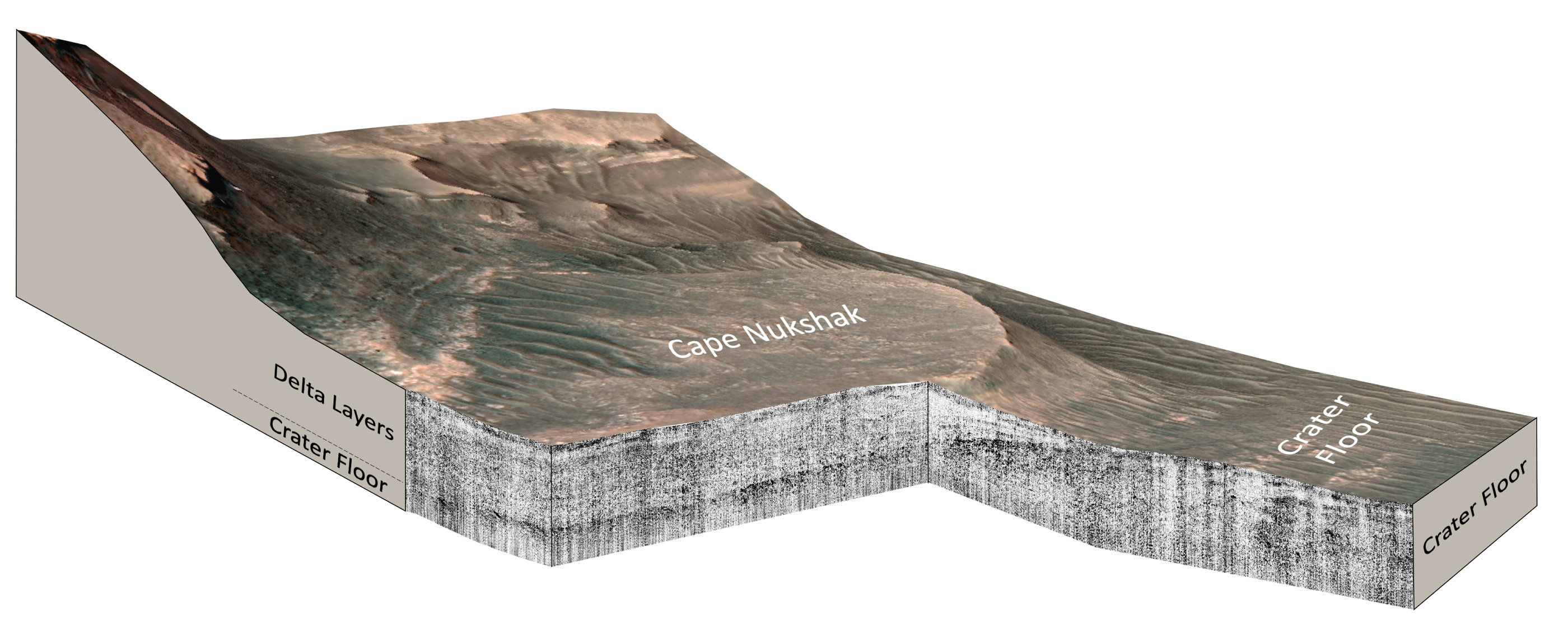
NASA’s Perseverance rover has collected data confirming the existence of ancient lake sediments formed by water that once filled a giant basin on Mars called Jerezo Crater, according to a study published Friday.
The rover’s radar observations confirm previous orbital images and other data that have led scientists to suggest that parts of Mars were once covered in water and may have harbored microbial life.

(photo: SWNS / SWNS / Profimedia)
The study, led by teams from the University of California, Los Angeles (UCLA) and the University of Oslo, was published in the journal Science Advances.
Perseverance found delta-like deposits on Earth
This was based on scans of subsurface rocks taken by the six-wheeled, car-sized rover over several months in 2022 as it traveled across the Martian surface from the crater floor to an adjacent area of undulating sediments, similar to a photograph from orbit. – to river deltas on Earth.
The RIMFAX radar probe allowed scientists to peer underground to get a cross-sectional view of the rock layers at a depth of 20 meters, “almost like looking at a cross-section,” said UCLA planetary scientist David Page, lead author of the study. paper.
These layers provide incontrovertible evidence that hydrous sediments were deposited in the Jerezo Crater and its delta by the river that fed it, just as in lakes on Earth.
The findings confirmed what previous research had long suspected — that cold, barren, lifeless Mars was once warm, wet, and possibly habitable.
Scientists are looking forward to scrutinizing the Jerezo sediments, which are believed to have formed around 3 billion years ago, in samples collected by Perseverance for future transport to Earth.
Meanwhile, the latest research is welcome confirmation that scientists have, after all, landed their geobiological foray on Mars in the right place.
“The news is that we have reached the delta”
Remote sensing of the first core samples drilled by Perseverance at four sites near where it landed in February 2021 surprised researchers by revealing rocks of a volcanic nature, not sedimentary as expected.
These two studies do not contradict each other.
Even the volcanic rocks showed signs of weathering by water, and scientists who published the findings in August 2022 speculated at the time that the sediments might have been eroded away.
Indeed, RIMFAX radar measurements reported Friday revealed signs of erosion before and after the formation of sedimentary layers exposed on the crater’s western rim, providing evidence of a complex geological history, Page said.
“The area we went to had volcanic rocks,” Paige said.
“The real news here is that we’ve reached the delta and now we see evidence of these lacustrine deposits, which is one of the main reasons we came here. Therefore, from this point of view, it is a happy story,” he added.
- Read also After a historic mission, NASA says goodbye to its helicopter on Mars
Source: Hot News
Ashley Bailey is a talented author and journalist known for her writing on trending topics. Currently working at 247 news reel, she brings readers fresh perspectives on current issues. With her well-researched and thought-provoking articles, she captures the zeitgeist and stays ahead of the latest trends. Ashley’s writing is a must-read for anyone interested in staying up-to-date with the latest developments.